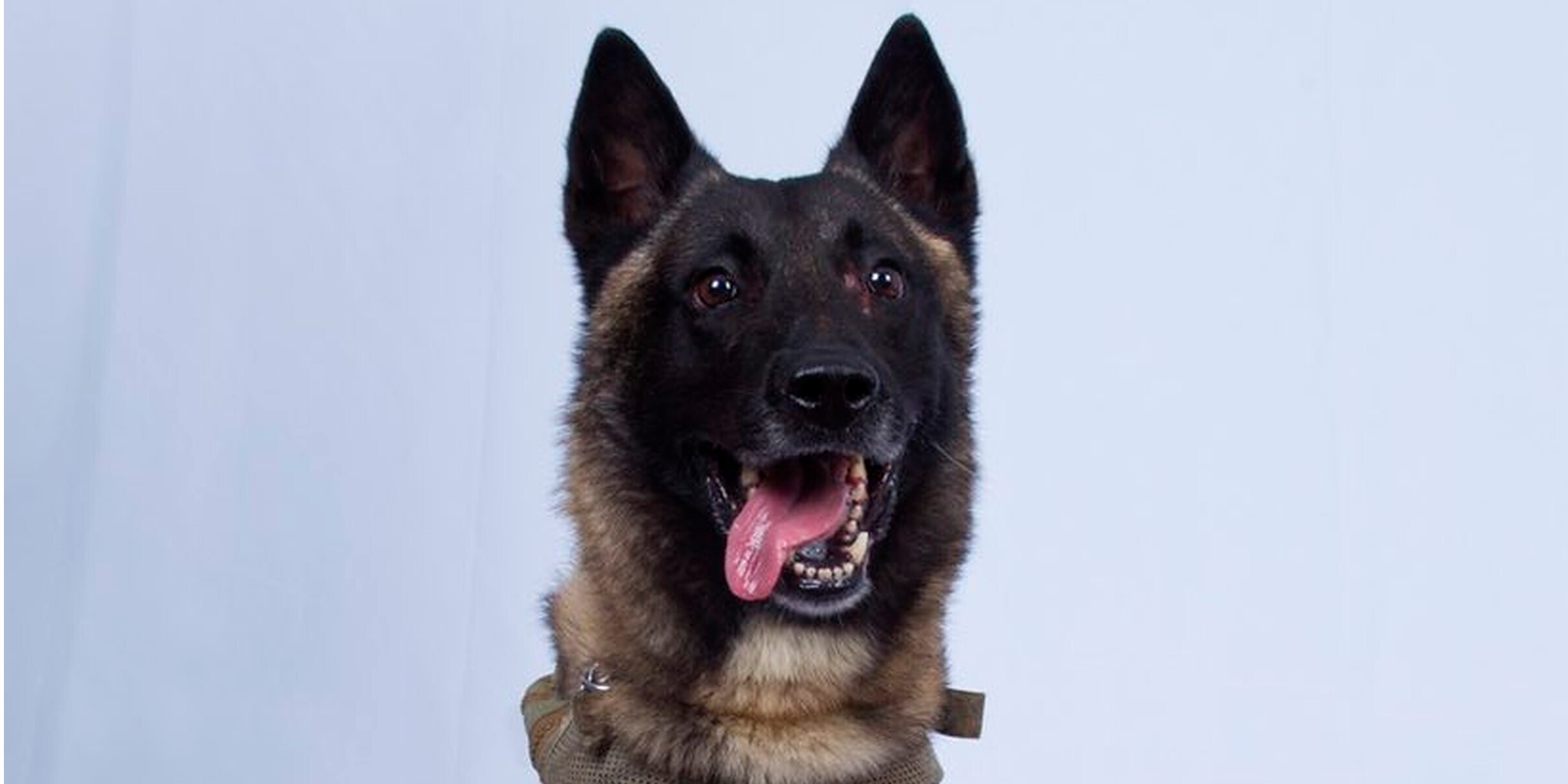- Military dogs are so important that they hold ranks themselves, and they’re always ranked one higher than their handlers.
- By and large, military working dogs are treated as regular US troops would be.
- Visit BusinessInsider.com for more stories.
Military working dogs are an essential part of many missions – even sensitive ones, like the raid on the compound of ISIS leader Abu Bakr al-Baghdadi on Saturday night. They’re so important, in fact, that they hold ranks themselves, and they’re always ranked one higher than their handlers.
That seniority honors the dog’s role and reminds the handler to be lenient when it has a bad day.
The dog who chased after Baghdadi, leading to his death by suicide, has become a celebrity – even though the dog’s name remains classified. A photo of the dog led to confirmation of its breed (a Belgian Malinois), but little else is known about the good boy (or girl). Disclosing the dog’s name and rank could lead to information about the dog’s affiliation with Delta Force, a classified unit, The Washington Post reports. That unit is still in the field, and revealing the dog’s name could put its handler at risk, although the dog’s possible name and sex have been reported, by Newsweek and the Washington Post, respectively.
Read more to learn more about military working dogs.
The bond between a military working dog and its handler is vitally important to completing missions.

A handler needs to be able to read shifts and subtleties in their canine partner's behavior to gather information about their targets or environments, and even how the dog is feeling.
For example, if the dog doesn't feel like working, or has deficiencies with some tasks, the handler needs to be able to pick up on this and give the dog the tools, training, and motivation it needs to complete the task.
While the military working dog's rank is a formality, it's meant to encourage handlers to treat their dogs with love and respect.

Handlers have to be able to communicate what their canine partners are "telling" them, and to know without a doubt that the dog will listen to him or her.
"There's no doubt about my dog: Number one, he will protect me. Number two, he will find a bomb," Sgt. 1st Class Regina Johnson told the Army in 2011.
Military working dogs are non-commissioned officers (NCOs).

By and large, military working dogs are treated as regular US troops would be.
Unfortunately, there was one period where military working dogs were left behind in a combat zone - in South Vietnam, during US troops' hasty withdrawal there.
Prior to 2000, military working dogs were also euthanized after their service was finished. Military working dogs can now be adopted to civilians once their service is finished.
Cairo the dog, also a Belgian Malinois, earned accolades from former President Barack Obama for his role in killing al Qaeda leader Osama bin Laden in 2011.

Cairo secured the perimeter of bin Laden's compound in Pakistan, and, should the al Qaeda leader have proven difficult to find, Cairo would be sent in after him.
Upon hearing that Cairo was involved in the raid, former President Barack Obama said, "I want to meet that dog," according to an account in The New Yorker.
"If you want to meet the dog, Mr. President, I advise you to bring treats," one member of the SEAL team jokingly advised the president.
Military working dogs and their partners both require extensive training to keep up with the demands of their job.

Dogs and their trainers go through a 93-day training program to cement their skills and gain practice as a team in real-world scenarios, according to the Army.
Only about 50% of the dogs the military procures to become military working dogs are actually suitable for the job.
Military working dogs fulfill several important roles in operations, like sniffing out explosives.

Or detecting narcotics.

Locating the wounded.

And as sentinels who can patrol and protect during a mission.

They're more than man's best friend. Military working dogs are an essential part of the mission.


